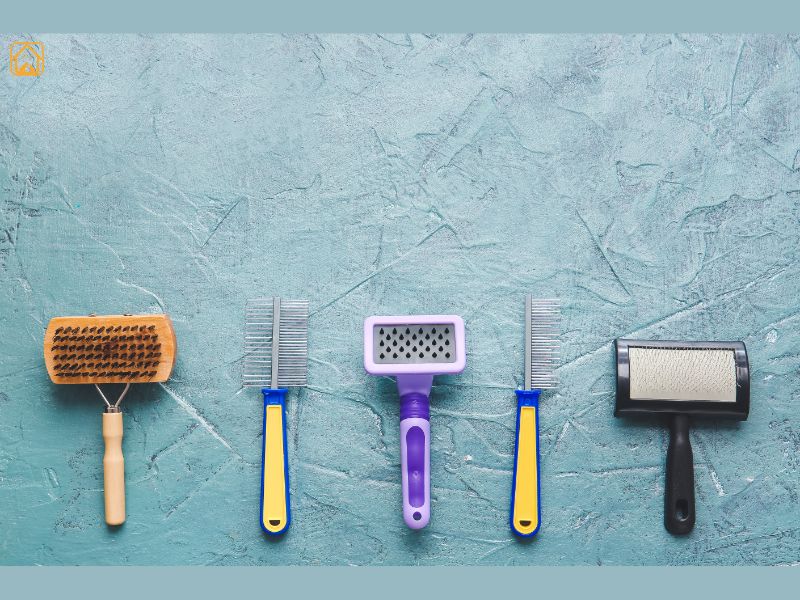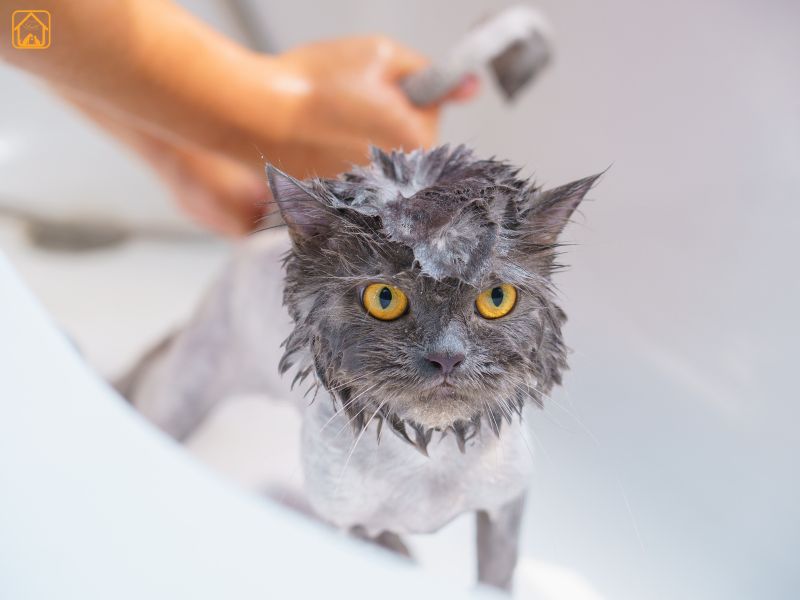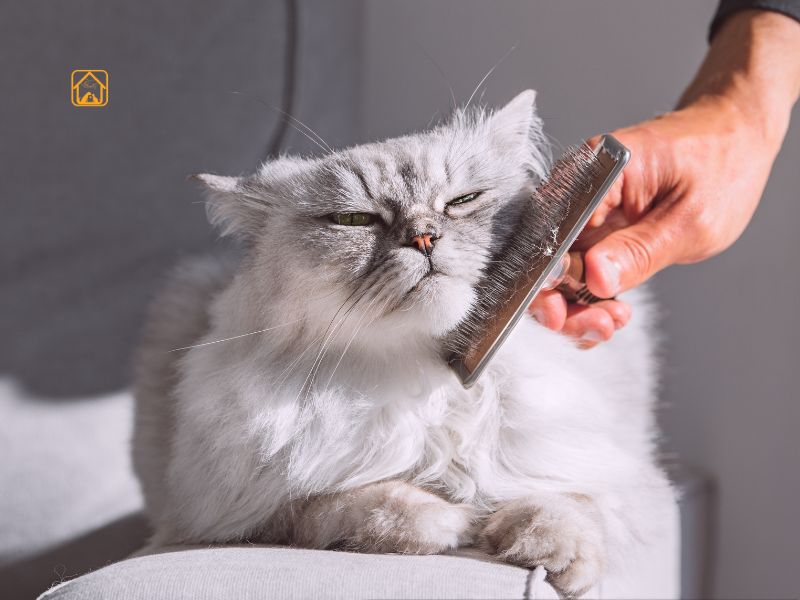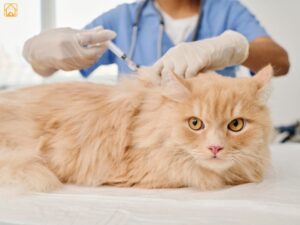Understanding Persian Cat Grooming Needs
Persian cats are famous for their long, thick coats and sweet personalities, but that beauty comes with a price of regular and attentive grooming. Their unique fur can mat and tangle quickly, especially around the armpits, belly, and behind the ears. Persian cats can’t manage all their grooming needs on their own, pet parents need to step in daily. Neglecting grooming can lead to discomfort, skin infections, and even health issues like hairballs or blocked digestive systems.
What makes Persian cat grooming special? Their dense double coat, flat faces, and sensitive eyes require a little extra know-how and patience. Trust me, once you get in the groove, it feels less like a chore and more like quality time together.
Essential Grooming Tools for Persian Cats

Having the right Persian cat grooming kit saves time and frustration. Here’s what you really need:
- Wide-toothed metal comb: For detangling and reaching deep into their undercoat.
- Slicker brush: Ideal for removing loose fur and preventing mats.
- Fine-toothed face comb: Gentle on the sensitive face area.
- Cat-safe nail clippers: To keep claws trimmed and healthy.
- Soft, lint-free cloths: For wiping eyes and ears.
- Cat-specific shampoo: For safe, gentle cleaning during baths.
- Antistatic spray or conditioner: Optional, but helps manage static and add shine.
Some pet parents swear by adding a grooming glove or de-shedding tool to their Persian cat grooming kit, especially during shedding season.
Daily Brushing: Techniques and Best Brushes
How to Brush Your Persian Cat Effectively
Daily brushing is the heart of Persian cat grooming at home. Start by gently running your fingers through the coat to find any knots. Use a wide-toothed metal comb to tackle trouble spots, working in small sections from the head down the body. Always brush in the direction of fur growth, Persians can be sensitive if you pull the wrong way.
- Begin with the top coat using a slicker brush. Then, move to the undercoat with a comb.
- Check common problem areas: behind ears, armpits, belly, and under the tail.
- Finish with a gentle pass of a soft brush or comb for shine.
Looking for the best brush for Persian cats? A metal comb with both wide and narrow teeth, plus a high-quality slicker brush, does wonders. Avoid plastic brushes, they create static and can irritate your cat’s skin.
Here’s a tip from my own routine: reward your Persian with a treat after brushing. It turns grooming into a positive, bonding experience.
Bathing Your Persian Cat: Frequency, Products & Steps

Persian cats need regular baths to keep their long fur clean and free from grease or dirt. Most Persians do well with a bath every 3-6 weeks, but you may need to bathe more often during shedding season or if your cat tends to get oily.
- Brush thoroughly before bathing to remove tangles and mats.
- Use lukewarm water and a cat-specific shampoo with a neutral pH.
- Wet the body first, avoiding the face and ears.
- Massage shampoo gently from neck to tail. Rinse completely.
- Towel dry and, if your cat allows, use a pet-safe hair dryer on low.
Never use human shampoos, they can irritate your Persian’s sensitive skin. If your cat is anxious about baths, introduce water slowly and use lots of encouragement. Honestly, the first few times can be a circus, but it gets better!
Face, Eye, and Ear Care: Preventing Stains and Infections
Keeping Persian Faces Clean and Healthy
Those soulful, big eyes and flat faces are adorable, but they mean Persian cats are prone to tear staining and dirt buildup. Daily face cleaning is a must. Use a soft, damp cloth (never cotton balls, as fibers can irritate eyes) to gently wipe away tear stains and debris from the corners of the eyes and nose.
- Try a cat-safe eye cleanser or saline solution if stains are stubborn.
- Dry the area well to prevent skin irritation.
- Check for redness, swelling, or unusual discharge, these may signal infection.
For ear care, use a damp cloth or a vet-approved ear cleaner weekly. Don’t insert anything deep into the ear canal. If you notice a persistent odor or dark wax, check with your vet. Ear and eye care matter as much as coat care for your Persian’s comfort.
Nail Clipping and Hygiene for Persian Cats
Regular nail trimming isn’t just for your furniture, it’s for your cat’s health and comfort too. Persian cats often need their nails trimmed every 2-3 weeks. Use cat-specific clippers and clip just the sharp tip, avoiding the pink quick inside each nail.
- Start nail trims young, so your cat gets used to the process.
- Check paws for dirt or litter clumps during each grooming session.
- Trim fur around the hindquarters to minimize mess and improve hygiene, especially for long-haired Persians.
Trust me, if you make nail trimming part of your regular Persian cat grooming at home, it becomes quick and painless, at least most of the time!
Dealing with Mats, Tangles, and Shedding
What to Do When You Find a Mat
Mats and tangles are a fact of life with Persian cats, no matter how careful you are. If you find a mat, gently tease it apart with your fingers or a wide-toothed comb, never pull hard or cut close to the skin. For stubborn mats, try a detangling spray or consult a professional groomer.
- Check daily for mats in problem zones: armpits, behind the ears, and under the tail.
- Regular brushing reduces shedding and the risk of hairballs.
- During heavy shedding, increase brushing sessions and consider using a de-shedding tool.
Ever had a mat so stubborn you thought you’d have to shave the whole area? Don’t panic, most can be worked out with patience. If it gets too tough, there’s no shame in asking your vet or groomer for help.
Professional Grooming vs. At-Home Grooming: What to Know
There’s a time and place for both DIY and professional Persian cat grooming. At-home grooming is perfect for daily maintenance, brushing, face and eye cleaning, and nail trims. But when you encounter stubborn mats, need a sanitary trim, or your cat has special needs, a professional groomer can be a lifesaver.
- Pros handle tricky mats and offer full-service baths, trims, and blowouts.
- Groomers can spot early signs of skin problems or parasites.
- Regular professional grooming, paired with at-home care, keeps your Persian looking and feeling great.
Some folks handle all grooming at home, while others prefer regular pro visits. Find the mix that works for your lifestyle, and your cat’s comfort.
Persian Cat Grooming Tips
Not all Persians have the same grooming needs. Here’s what to watch for:
- Kittens: Start slow with short, gentle sessions and lots of treats. Early routines build lifelong habits.
- Seniors: Older cats might have arthritis or sensitive skin. Use softer brushes and take breaks if needed.
- Show cats: Show Persians need extra attention, daily baths, coat conditioners, and perfect trims. If you’re prepping for a show, ask a pro for breed-standard tips.
Every Persian is unique, so adapt your grooming routine as your cat ages or their needs change. I’ve seen some cats love grooming time at any age, while others need a little more coaxing as they get older.
FAQs: Persian Cat Grooming
How often should I groom my Persian cat?
Daily brushing and weekly face cleaning are musts. Bathe your cat every 3-6 weeks, or more often if they get dirty or oily.
What’s the best brush for Persian cats?
A metal comb with wide and fine teeth, plus a quality slicker brush. These reach the undercoat and prevent mats.
Can I use human shampoo on my Persian?
No, human shampoos can irritate your cat’s skin. Always use a gentle, cat-specific shampoo.
How do I remove tear stains from my Persian cat’s face?
Wipe daily with a soft, damp cloth or use a vet-recommended eye cleanser. Keep the area dry to prevent staining and infection.
Is professional grooming necessary?
For most Persians, regular at-home grooming is enough. See a pro for difficult mats, sanitary trims, or show prep.
How can I make grooming less stressful for my cat?
Start early, keep sessions short, use treats, and talk softly. If your cat is anxious, try gentle massage or grooming after playtime.
What should I do if my Persian’s coat gets matted?
Work gently with your fingers or a wide-toothed comb. For severe mats, don’t risk injury, ask a vet or groomer for help.
Conclusion
Grooming your Persian cat isn’t just good for their looks, it’s a real act of love. A little patience, the right tools, and some daily attention make all the difference. You’ll both enjoy the time together, and your Persian will thank you with purrs, cuddles, and that unmistakable royal pose only a well-groomed Persian can pull off.



